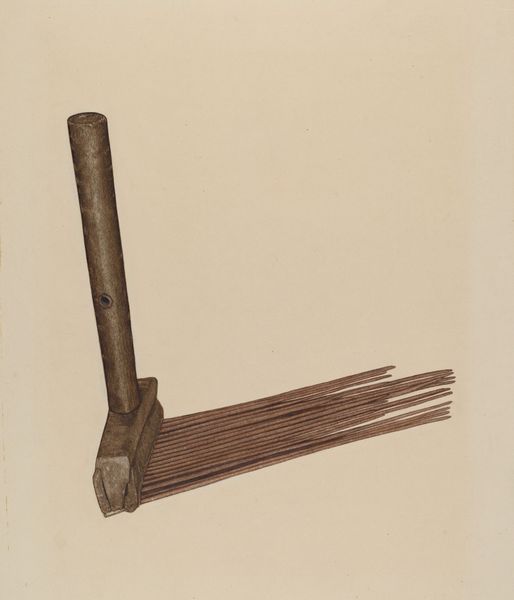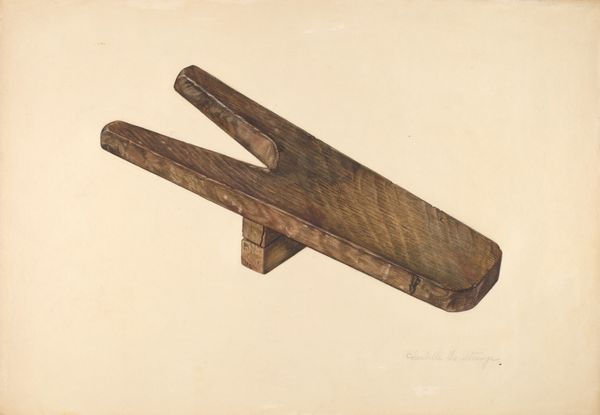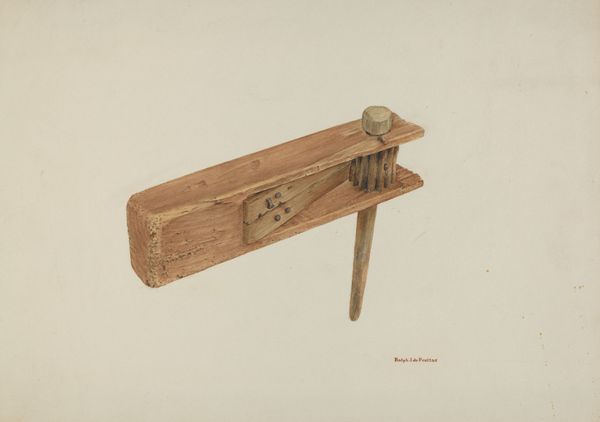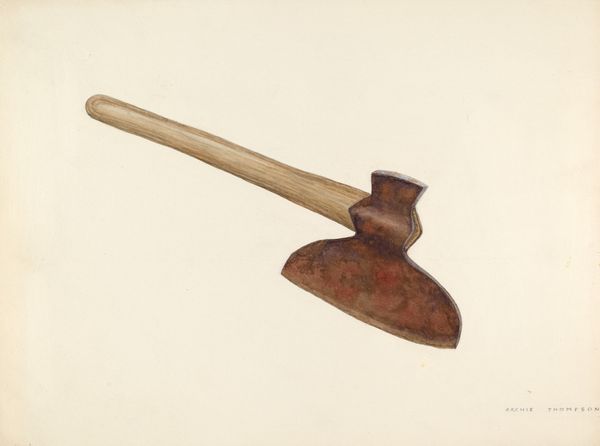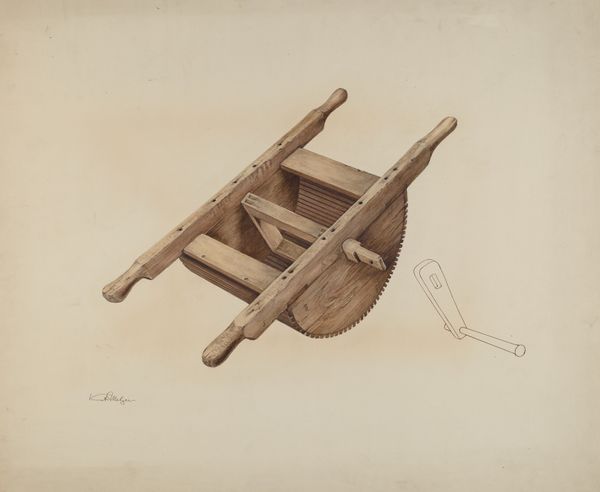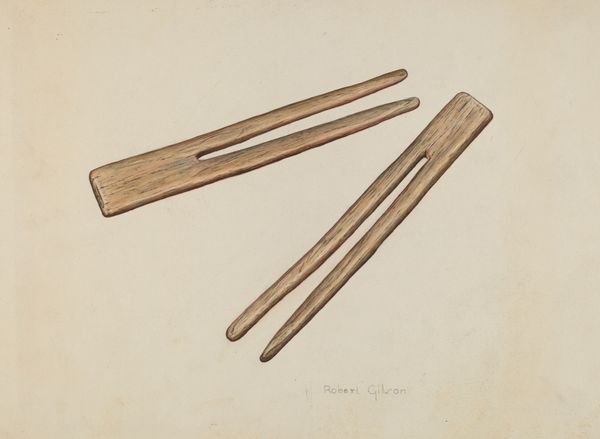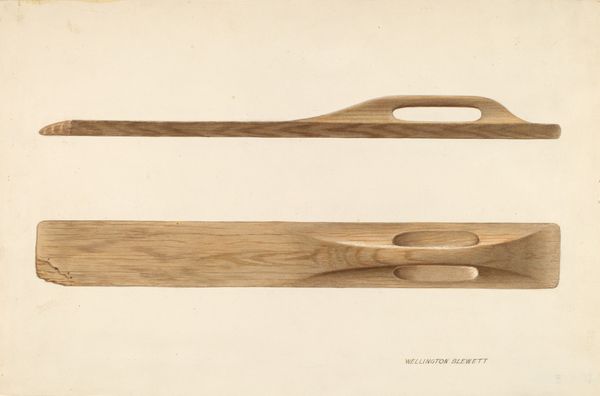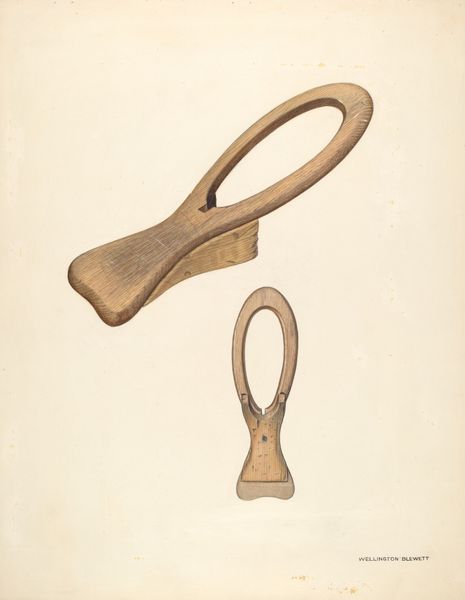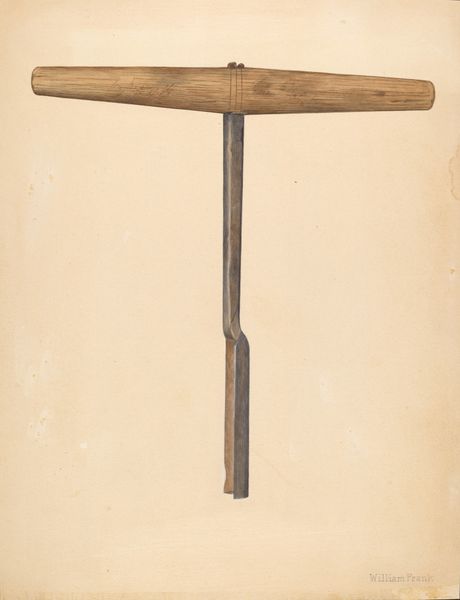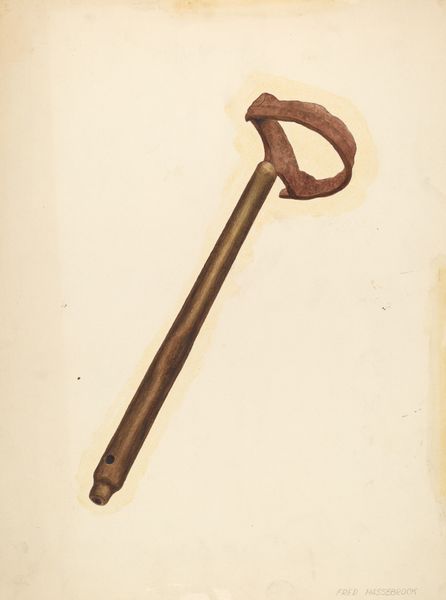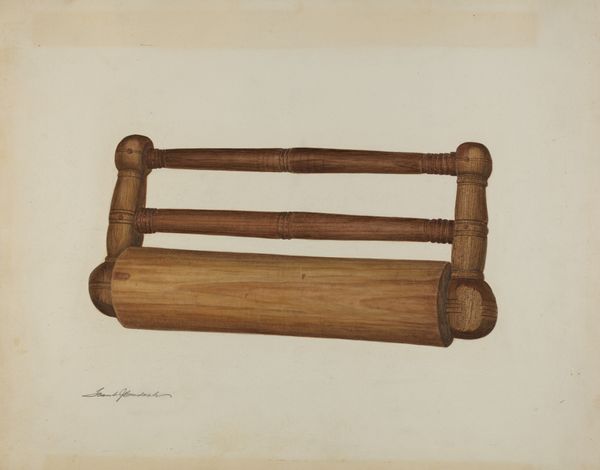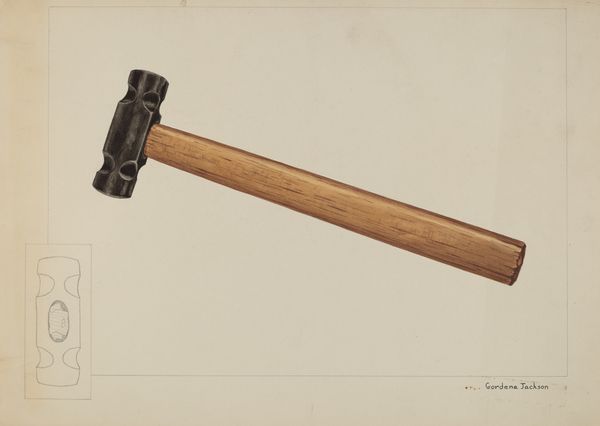
drawing, watercolor
#
drawing
#
watercolor
#
pencil drawing
#
watercolour illustration
#
watercolor
Dimensions: overall: 33.2 x 45.5 cm (13 1/16 x 17 15/16 in.) Original IAD Object: 26" long; 5" wide
Copyright: National Gallery of Art: CC0 1.0
Editor: This is H. Langdon Brown's "Bishop Hill: Mangler," a watercolor and pencil drawing from around 1939. It depicts what appears to be a laundry mangler, almost like a sculptural still life. What can you tell me about this particular piece? Curator: From a materialist perspective, I see this work as a commentary on labor. This mangler, typically used for pressing linens, represents a domestic task, labor-intensive before mechanization. Consider the production of both the object itself, fashioned from wood – a natural resource – and the cloth it would press, involving cultivation, spinning, and weaving. The drawing, then, is not just a representation, but an engagement with the chain of production. Editor: That’s fascinating! I hadn’t thought about all the processes behind the mangler itself. Does the medium – watercolor and pencil – inform your interpretation? Curator: Absolutely. Watercolor, often associated with craft and amateur artistry, is employed here. It almost democratizes the process. Is it high art? Or documentation of the everyday object. How do we value these activities? By highlighting this object in watercolor, Brown invites us to question the hierarchy of artistic mediums and, by extension, the value we place on different kinds of labor. The very making, through common material elevates, as does Brown, the art object. Editor: So, you see the artistic choice reflecting the subject matter itself. Interesting to see an artist create an egalitarian stance on his rendering and materials, not just his chosen subjects. Curator: Precisely. This isn't simply a rendering; it's an investigation into materiality, production, and the cultural values attached to them. It encourages us to appreciate the material culture around us and its history and invites a critique of art historical structures. Editor: Thanks, this gives me so much to consider! I didn’t realize how much this drawing could tell us about materiality and labor! Curator: Indeed. By understanding the processes and materials involved, we gain a richer understanding of not only the artwork but also the society that produced it.
Comments
No comments
Be the first to comment and join the conversation on the ultimate creative platform.

